这篇文章主要讲解了“Python数据科学Matplotlib图库的用法”,文中的讲解内容简单清晰,易于学习与理解,下面请大家跟着小编的思路慢慢深入,一起来研究和学习“Python数据科学Matplotlib图库的用法”吧!
Matplotlib 是 Python 的二维绘图库,用于生成符合出版质量或跨平台交互环境的各类图形。
图形解析
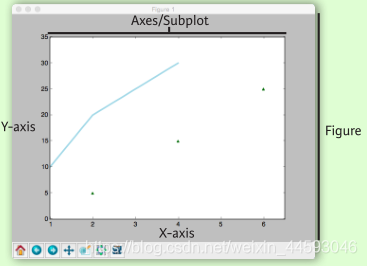
工作流
Matplotlib 绘图的基本步骤:
1 准备数据
2 创建图形
3 绘图
4 自定义设置
5 保存图形
6 显示图形
import matplotlib.pyplot as plt
x = [1,2,3,4] # step1
y = [10,20,25,30]
fig = plt.figure() # step2
ax = fig.add_subplot(111) # step3
ax.plot(x, y, color='lightblue', linewidth=3) # step3\4
ax.scatter([2,4,6],
[5,15,25],
color='darkgreen',
marker='^')
ax.set_xlim(1, 6.5)
plt.savefig('foo.png') # step5
plt.show() # step6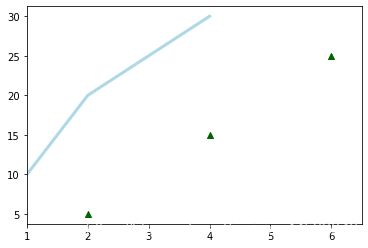
一维数据
import numpy as np
x = np.linspace(0, 10, 100)
y = np.cos(x)
z = np.sin(x)二维数据或图片
data = 2 * np.random.random((10, 10))
data2 = 3 * np.random.random((10, 10))
Y, X = np.mgrid[-3:3:100j, -3:3:100j]
U = -1 - X**2 + Y
V = 1 + X - Y**2
from matplotlib.cbook import get_sample_data
img = np.load('E:/anaconda3/envs/torch/Lib/site-packages/matplotlib/mpl-data/aapl.npz')绘制图形
import matplotlib.pyplot as plt画布
fig = plt.figure()
fig2 = plt.figure(figsize=plt.figaspect(2.0))坐标轴
图形是以坐标轴为核心绘制的,大多数情况下,子图就可以满足需求。子图是栅格系统的坐标轴。
fig.add_axes()
ax1 = fig.add_subplot(221) # row-col-num
ax3 = fig.add_subplot(212)
fig3, axes = plt.subplots(nrows=2,ncols=2)
fig4, axes2 = plt.subplots(ncols=3)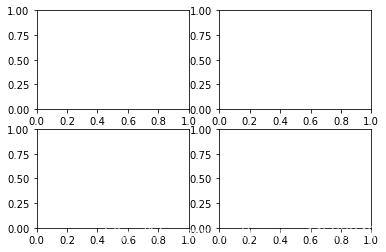
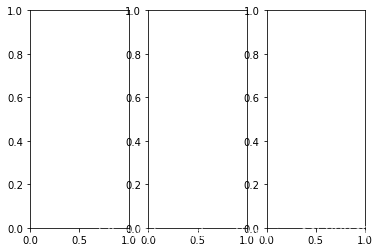
一维数据
fig, ax = plt.subplots()
lines = ax.plot(x,y) # 用线或标记连接点
ax.scatter(x,y) # 缩放或着色未连接的点
axes[0,0].bar([1,2,3],[3,4,5]) # 绘制等宽纵向矩形
axes[1,0].barh([0.5,1,2.5],[0,1,2]) # 绘制等高横向矩形
axes[1,1].axhline(0.45) # 绘制与轴平行的横线
axes[0,1].axvline(0.65) # 绘制与轴垂直的竖线
ax.fill(x,y,color='blue') # 绘制填充多边形
ax.fill_between(x,y,color='yellow') # 填充y值和0之间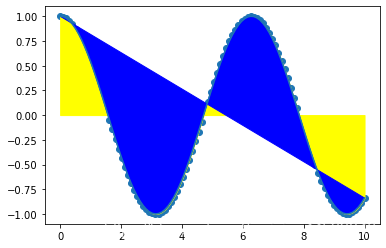
二维数据或图片
import matplotlib.image as imgplt
img = imgplt.imread('C:/Users/Administrator/Desktop/timg.jpg')
fig, ax = plt.subplots()
im = ax.imshow(img, cmap='gist_earth', interpolation='nearest', vmin=-200, vmax=200)# 色彩表或RGB数组
axes2[0].pcolor(data2) # 二维数组伪彩色图
axes2[0].pcolormesh(data) # 二维数组等高线伪彩色图
CS = plt.contour(Y,X,U) # 等高线图
axes2[2].contourf(data)
axes2[2]= ax.clabel(CS) # 等高线图标签
向量场
axes[0,1].arrow(0,0,0.5,0.5) # 为坐标轴添加箭头
axes[1,1].quiver(y,z) # 二维箭头
axes[0,1].streamplot(X,Y,U,V) # 二维箭头数据分布
ax1.hist(y) # 直方图
ax3.boxplot(y) # 箱形图
ax3.violinplot(z) # 小提琴图自定义图形 颜色、色条与色彩表
plt.plot(x, x, x, x**2, x, x**3)
ax.plot(x, y, alpha = 0.4)
ax.plot(x, y, c='k')
fig.colorbar(im, orientation='horizontal')
im = ax.imshow(img,
cmap='seismic')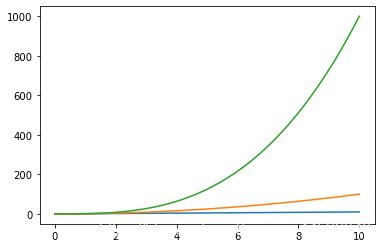
标记
fig, ax = plt.subplots()
ax.scatter(x,y,marker=".")
ax.plot(x,y,marker="o")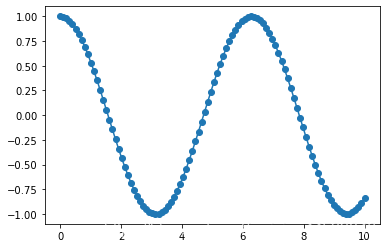
线型
plt.plot(x,y,linewidth=4.0)
plt.plot(x,y,ls='solid')
plt.plot(x,y,ls='--')
plt.plot(x,y,'--',x**2,y**2,'-.')
plt.setp(lines,color='r',linewidth=4.0)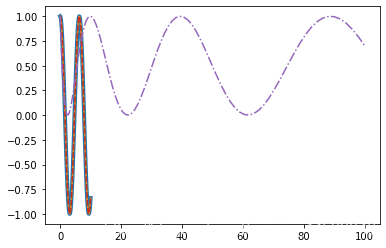
文本与标注
ax.text(1,
-2.1,
'Example Graph',
style='italic')
ax.annotate("Sine",
xy=(8, 0),
xycoords='data',
xytext=(10.5, 0),
textcoords='data',
arrowprops=dict(arrow,
connection),)数学符号
plt.title(r'$sigma_i=15$', fontsize=20)尺寸限制与自动调整
ax.margins(x=0.0,y=0.1) # 添加内边距
ax.axis('equal') # 将图形纵横比设置为1
ax.set(xlim=[0,10.5],ylim=[-1.5,1.5]) # 设置x轴与y轴的限
ax.set_xlim(0,10.5)图例
ax.set(title='An Example Axes',
ylabel='Y-Axis',
xlabel='X-Axis') # 设置标题与x、y轴的标签
ax.legend(loc='best') # 自动选择最佳的图例位置标记
ax.xaxis.set(ticks=range(1,5),
ticklabels=[3,100,-12,"foo"]) # 手动设置X轴刻度
ax.tick_params(axis='y',
direction='inout',
length=10) # 设置Y轴长度与方向子图间距
fig3.subplots_adjust(wspace=0.5,
hspace=0.3,
left=0.125,
right=0.9,
top=0.9,
bottom=0.1)
fig.tight_layout() # 设置画布的子图布局坐标轴边线
ax1.spines['top'].set_visible(False) # 隐藏顶部坐标轴线
ax1.spines['bottom'].set_position(('outward',10)) # 设置底部边线的位置为outward保存
#保存画布
plt.savefig('foo.png')
# 保存透明画布
plt.savefig('foo.png', transparent=True)显示图形
plt.show()关闭与清除
plt.cla() # 清除坐标轴
plt.clf() # 清除画布
plt.close() # 关闭窗口感谢各位的阅读,以上就是“Python数据科学Matplotlib图库的用法”的内容了,经过本文的学习后,相信大家对Python数据科学Matplotlib图库的用法这一问题有了更深刻的体会,具体使用情况还需要大家实践验证。这里是亿速云,小编将为大家推送更多相关知识点的文章,欢迎关注!
亿速云「云服务器」,即开即用、新一代英特尔至强铂金CPU、三副本存储NVMe SSD云盘,价格低至29元/月。点击查看>>
免责声明:本站发布的内容(图片、视频和文字)以原创、转载和分享为主,文章观点不代表本网站立场,如果涉及侵权请联系站长邮箱:is@yisu.com进行举报,并提供相关证据,一经查实,将立刻删除涉嫌侵权内容。